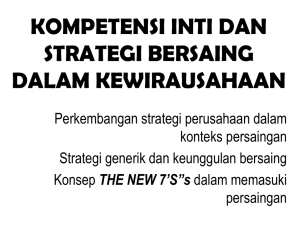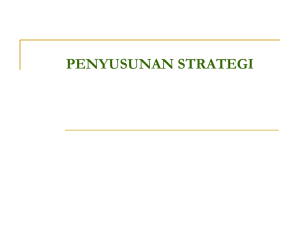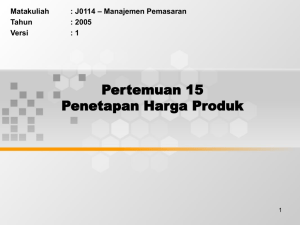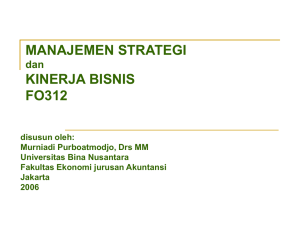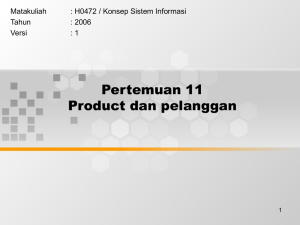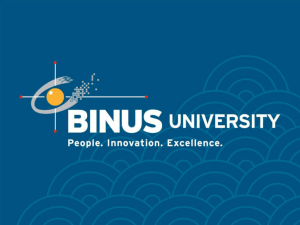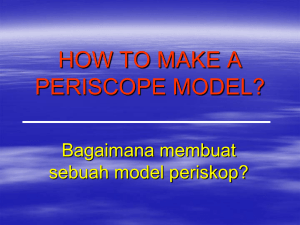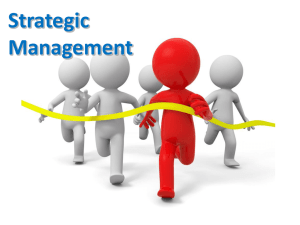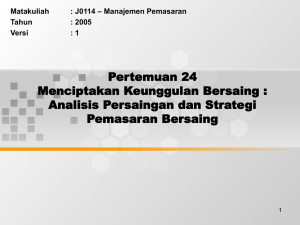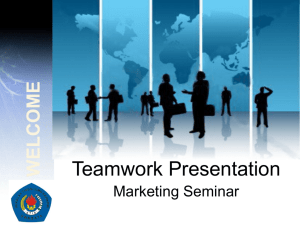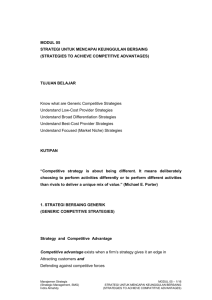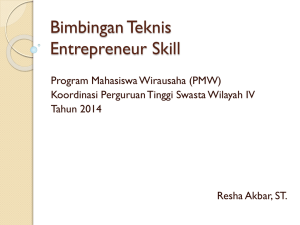Mengapa Strategi Banyak yang Gagal Diterapkan
advertisement
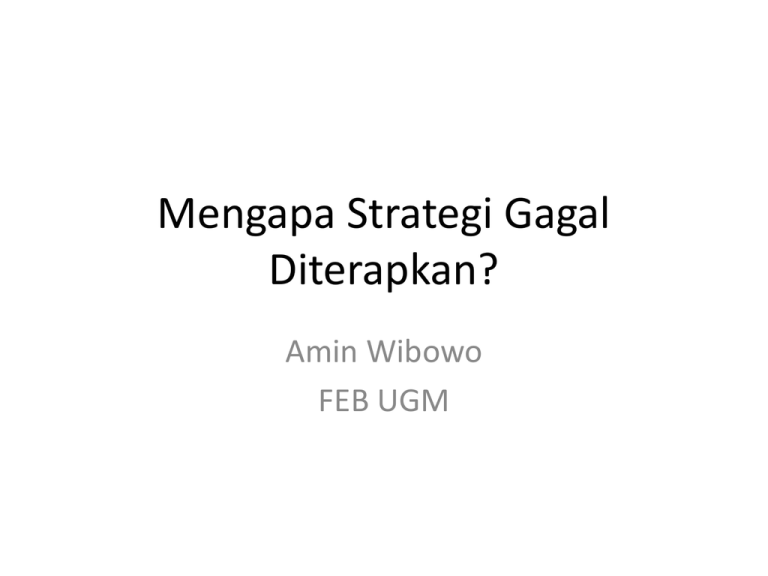
Mengapa Strategi Gagal Diterapkan? Amin Wibowo FEB UGM Lima Elemen Utama Strategi Dimana perusahaan akan aktif? • Kategori produk? • Segmen pasar? • Area geografis? • Teknologi? • Tahap kreasi nilai? Arena Bagaimana kecepatan dan tahapan eksekusi strategi? •Kecepatan ekspansi? •Tahapan inisiatif? Bagaimana perusahaan akan mendapatkan returns? • Biaya lebih rendah melalui keunggulan skala? • Biaya lebih rendah melalui keunggulan scope dan replikasi? • Harga premium melalui keunggulan kualitas produk? • Harga premium melalui layanan yang unik? Staging Economic Logic Vehicles Differentiations Bagaimana memenangkan persaingan? •Harga? •Citra? •Pelayanan terintegrasi? •Customization? •Kualitas produk? 2 Bagaimana pengembangan akan dilakukan? •Pengembangan internal? •Aliansi strategik? •Joint ventures? •Licensing/franchising? •Spin off? Crafting vs. Executing Strategy Crafting the Strategy • Primarily a market-driven activity • Successful strategy making depends on – Business vision – Perceptive analysis of market conditions and company capabilities – Attracting and pleasing customers – Outcompeting rivals – Using company capabilities to forge a competitive advantage Executing the Strategy • Primarily an operations-driven activity • Successful strategy execution depends on – Doing a good job of working through others – Good organization-building – Building competitive capabilities – Creating a strategysupportive culture – Getting things done and delivering good results Alat untuk membantu implementasi strategi? Strategy: the direction and scope of the company over the long term. Strategy: the direction and scope of the company over the long term. Structure: the basic the organization of the company, its Structure: basic organization of the its departments, reporting lines, areasand departments,company, reporting lines, areas of expertise of expertise and responsibility (and how they responsibility (and how they inter-relate). inter-relate). Systems: formal and informal proceduresthat that govern Systems: formal and informal procedures govern everyday activity, covering everything everyday activity, covering everything from management from management information systems, information through systems, systems to thethrough systems attothethe point of contactat the point of customer (retail systems, call center contact withwith thethe customer (retail systems, call center systems, online systems, etc). systems, online systems, etc). THE SOFT S’s Skills: the capabilities and competencies that exist within the company. What it does best. Shared values: the values and beliefs of the company. Ultimately they guide employees towards 'valued' behavior. Staff: the company's people resources and how the are developed, trained and motivated. Style: the leadership approach of top management and the company's overall operating approach. Key Performance Drivers (KPD’s) dan Key Performance Outcomes KPO’s) A Strategy Map Organizational Culture Inventory Satisfaction vs. Security Needs Higher Order Needs Lower Order Needs Task vs. People Orientation Task-Centered People-Centered OCI Ideal Culture Profile H O W C U L T U R E Antecedents Operating Culture Lever for Changes OCI Norms Resources Human Financial Knowledge Underlying Assumptions Espoused values (ideal culture) Philosophy Mission W O R K S Goals Strategies Demands Performance Efficiency Adaptation Structures Role Influence Decision-making System Training Appraisal Reinforcement Goal-setting Technology Job design Complexity Interdependence Skills/ Qualities Leadership Communication Bases of power Outcomes Individual Outcomes Motivation Performance Staisfaction Stress Group Outcomes Teamwork Inter-unit coordination Unit-level quality Organizational Outcomes Organizationallevel quality Quality of customer service External adaptability
